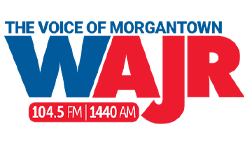BRIDGEPORT, W.Va. –– Governor Patrick Morrisey announced sweeping reforms for the state Department of Transportation during a news conference at the Division of Highways (DOH) District 4 office Monday. Financial management, personnel, transparency, and the critical mission of the department will all change under the new administration.
The $2.8 billion Roads to Prosperity program will not likely fund any additional new projects, according to Morrissey. During the first seven years of the program, Morrisey said a substantial portion of the fund was obligated, leaving no available money for additional projects; the current department will carry the annual debt service payments of $120 million. At more than $900 per West Virginian, Morrisey’s Roads to Prosperity program has become the most indebted bonded highway system in the country.
Senator Jim Justice, R, W.Va., released the following statement:
West Virginians overwhelmingly supported Senator Justice’s $2.8 billion investment in the states roads, bridges, and interstate system while he served as Governor. It is reassuring to see the current Governor intends to follow in Senator Justice’s footsteps when it comes to practical and transparent use of that allocated money.
Work included in the Roads to Prosperity program have been major projects like the $224 million upgrade to 26 bridges on I-70 in Wheeling and the $254 million project to expand I-64 in Nitro. The program also funded paving, road, bridge, and slide projects in all 55 counties in addition to creating many good jobs.
Moving forward, the DOH will prioritize maintenance projects, specifically bridges. Statewide, 14 percent of bridges are in poor condition, and Morrisey said his goal is to significantly get that number down.
“It’s going to be a massive culture change in state government,” Morrisey said. “It’s going to require us to get smarter and use more data to prioritize maintenance so we get more out of every dollar we have, so we’re going to be looking at different ways we can save so we don’t overpay for services.”
Internally the agency will use more technology to lower administrative operating costs and conduct a review of management. A review of the management levels found an unneeded layer of bureaucracy that Morrissey said will be cut. He said new Secretary of Transportation Todd Rumbaugh will see that more money is shifted to the agency mission of infrastructure.
“There were some divisions within the state Department of Transportation that had five assistant directors, and in most cases it was unnecessary,” Morrisey said. “We’re getting rid of the bureaucracy, and we’re going to put more money on the roads and bridges—that’s what the people want, and that’s what the people deserve.”
Shifting the focus to maintenance happens now, according to Morrissey. The changes announced are designed to allow the workers in the districts across the state to be able to improve roads and bridges.
“Right now, maintenance is going to come first—that’s critical,” Morrisey said. “We have to patch potholes, we have to pave roads, and we have to fix bridges, and that’s going to be a critical priority.”
Morrissey said there will be no more politics in road work conditions by shifting to a data-driven, evidence-based model. With that, Morrisey hopes to work with each municipality to identify needs and address them in an efficient manner.
“By taking state money, federal money, and county money and putting it all together to leverage county resources,” Morrisey said.
In addition to a new long-term plan and project list to guide the new strategy, there’s a new project list with priority and status available on the website for residents.
“I’ve directed the DOT to start a new project list that assesses the need for repair and replacement of bridges and highways statewide,” Morrisey said. “That will prioritize the projects to be completed.”



